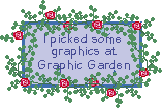| Choosing a
Quilting Design-- If you choose to hand- or machine-quilt your finished top, you will need to choose a design for quilting. There are several types of quilting designs, some of which may not have to be marked. The easiest of the unmarked designs is "in-the-ditch" quilting. Here the quilting stitches are placed in the valley created by the seams joining two pieces together or next to the edge of an applique design. There is no need to mark a top for in-the-ditch quilting. Machine quilters choose this option because the stitches are not as obvious on the finished quilt. Outline-quilting 1/4" or more away from seams or applique shapes is another no-mark alternative which prevents having to sew through the layers made by seams, thus making stitching easier. If you are not comfortable eyeballing the 1/4" (or other distance), masking tape is available in different widths and is helpful to place on straight-edge designs to mark the quilting line. If using masking tape, place the tape right up against the seam and quilt close to the other edge. Meander or free-motion quilting by machine fills in open spaces and doesn't require marking. It is fun and easy to stitch. Marking the
Top for Quilting or Tying-- Manufactured quilt-design templates are available in many designs and sizes and are cut out of a durable plastic template material which is easy to use. To make a permanent quilt-design template, choose a template material on which to transfer the design. See-through plastic is the best as it will let you place the design while allowing you to see where it is in relation to your quilt design without moving it. Place the design on the quilt top where you want it and trance around it with your marking tool. Pick up the quilting template and place again; repeat marking. No matter what marking method you use, remember--the marked lines should never show on the finished quilt. When the top is marked, it is ready for layering. Preparing the
Quilt Backing-- A backing is generally cut at least 4" larger than the quilt top or 2" larger on all sides. For a 64"x78" finished quilt, the backing would need to be at least 68"x82". To avoid having the seam across the center of the quilt backing, cut or tear one of the right-length pieces in half and sew half to each side of the second piece. Quilts that need a backing more than 88" wide may be pieced in horizontal pieces. Layering the
Quilt Sandwich-- Iron the backing piece, folding in half both vertically and horizontally and pressing to mark centers. If you will not be quilting on a frame, place the backing right side down on a clean floor or table. Start in the center and push any wrinkles or bunches flat. Use masking tape to tape the edges to the floor or large clips to hold the backing to the edges of the table. The backing should be taut. Place the batting on top of the backing, matching centers using fold lines as guides; flatten out any wrinkles. Trim the batting to the same size as the backing. Fold the quilt top in half lengthwise and place on top of the batting, wrong side against the batting, matching centers. Unfold quilt and working from the center to the outside edges, smooth out any wrinkles or lumps. To hold the quilt layers together for quilting, baste by hand or use safety pins. If basting by hand, thread a long thin needle with a long piece of unknotted white or off-white thread. Starting in the center and leaving a long tail, make 4"-6" stitches toward the outside edge of the quilt top, smoothing as you baste. Start at the center again and work toward the outside. If quilting by machine, you may prefer to use safety pins for holding your fabric sandwich together. Start in the center of the quilt and pin to the outside, leaving pins open until are placed. When you are satisfied that all layers are smooth, close the pins. |
Back  Next Next View Guestbook Sign  |
